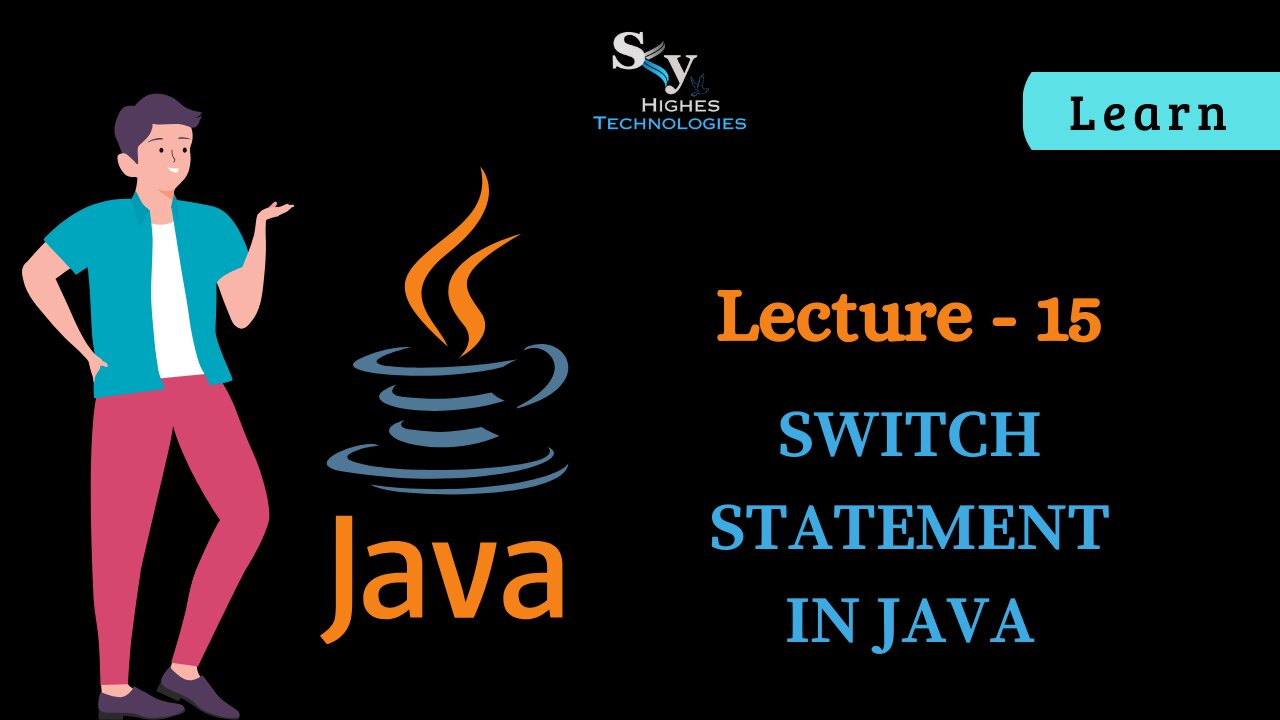Premium Only Content

#15 Switch Statement in JAVA | Skyhighes | Lecture 15
The Switch Statement: Java's Multi-Choice Maestro
Imagine your Java code standing at a crossroads, faced with several paths to choose from. The switch statement acts as a wise guide, analyzing specific options and directing the program down the right path.
Think of it like a fancy menu:
Each option (like "spaghetti", "pizza", "salad") corresponds to a different case label.
The code evaluates the chosen dish (the input value) and executes the recipe (the code block) associated with that case.
Here's how it works:
The "Menu":
You define one or more case labels with specific values or ranges.
Think of these as the available dishes on the menu.
The "Input":
You evaluate an expression, often a variable, whose value will determine the chosen path.
Imagine this as selecting your desired dish from the menu.
The "Matching Case":
The switch statement compares the input value with each case label.
If a match is found, the code block associated with that case is executed.
The "Default Option" (Optional):
You can include a default block that runs if no case matches the input value.
Think of this as the "catch-all" option on the menu if your desired dish isn't listed.
Example:
Java
String day = "Tuesday";
switch (day) {
case "Monday":
System.out.println("It's coffee day!");
break;
case "Tuesday":
System.out.println("Taco Tuesday!");
break;
case "Wednesday":
System.out.println("Hump day...");
break;
default:
System.out.println("Just another day...");
}
Use code with caution. Learn more
Key Points:
Use the switch statement when you have a limited number of distinct options to handle.
Each case label must have a unique value or range.
Use a break statement within each case block to prevent unwanted fall-through to subsequent cases.
Consider using if-else statements for scenarios with complex conditions or many branching paths.
Remember: The switch statement is a valuable tool for handling multiple choices efficiently. Master its use, and your Java code will navigate decision-making with the elegance of a seasoned restaurateur!
Bonus Tip: For handling strings a
-
![Tulsi Gabbard Declassifies Biden Admin Docs Targeting ‘Domestic Terrorism’[EP 4524-8AM]](https://1a-1791.com/video/fww1/e3/s8/1/Z/7/-/C/Z7-Cy.0kob-small-Tulsi-Gabbard-Declassifies-.jpg) LIVE
LIVE
The Pete Santilli Show
3 hours agoTulsi Gabbard Declassifies Biden Admin Docs Targeting ‘Domestic Terrorism’[EP 4524-8AM]
3,518 watching -
 LIVE
LIVE
2 MIKES LIVE
1 hour agoTHE MIKE SCHWARTZ SHOW with DR. MICHAEL J SCHWARTZ 04-18-2025
344 watching -
 1:22:30
1:22:30
Game On!
15 hours ago $3.52 earnedAaron Rodgers CONFIRMS with Pat McAfee he's NOT retiring... Maybe?
57.7K1 -
 37:09
37:09
Nick Freitas
1 day agoExposing The Worst of the Swamp
52.4K35 -
 30:12
30:12
CatfishedOnline
1 day agoOnly Fans Model Drains Man's Money in Romance Scam!
34K11 -
 15:01
15:01
Shea Whitney
22 hours ago $3.41 earned20 *Stylish* AMAZON Closet Organization Ideas for 2025!
36K7 -
 16:37
16:37
IsaacButterfield
1 day ago $2.88 earnedFatTok Is Ruining Lives
24.3K26 -
 8:42
8:42
VSOGunChannel
17 hours ago $2.76 earnedDOJ Attacks the Gun Industry & ATF Gets a New Deputy Director
26.2K15 -
 59:47
59:47
Trumpet Daily
22 hours ago $3.93 earnedKilmar Abrego Garcia: Democrat Poster Child and MS-13 Terrorist - Trumpet Daily | Apr. 17, 2025
24.3K4 -
 8:59
8:59
MudandMunitions
19 hours agoThe Savior Equipment Range Bag: Worth the Hype or Overrated?
29.8K1